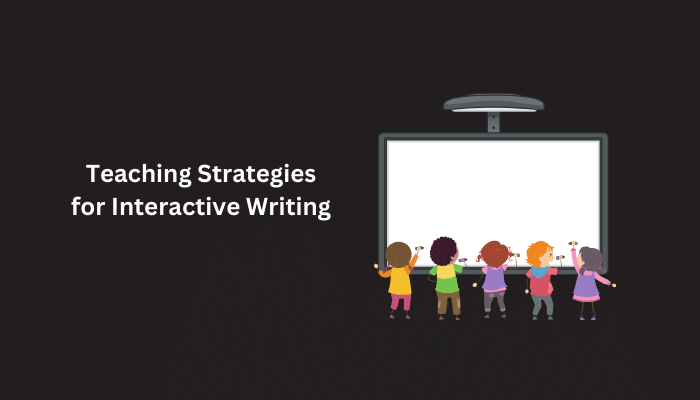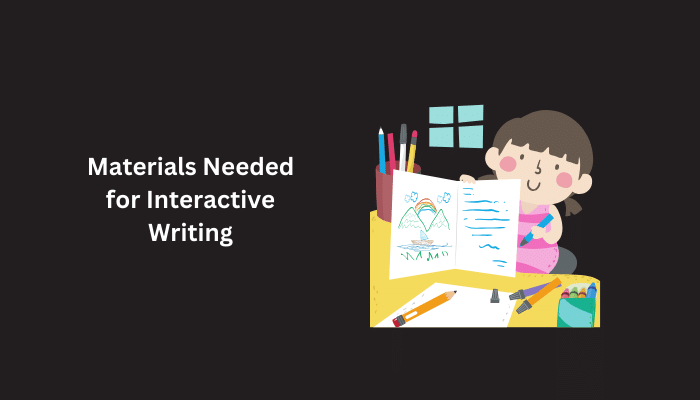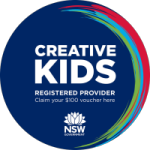Classroom teaching used to be seen as unidirectional and static. But new teaching strategies are transforming classrooms into a dynamic and engaging learning environment.
One such strategy is Interactive Writing, which is a dynamic process that fosters engagement, learning, and a sense of shared ownership over the writing experience.
Let’s take a look at its definition and purpose in a classroom.
Definition and Purpose of Interactive Writing in a Classroom
Interactive Writing is a collaborative process where the teacher and students co-create a piece of writing, fostering essential literacy skills in a fun and interactive way. It builds on long-standing educational theories that emphasize active and collaborative learning methodologies to engage students in the writing process.
The teacher initiates the writing process and then invites student contributions throughout the construction of the text. This enables students to actively participate and own the writing process.
The purpose of this collaborative writing process in the classroom is to:
-
Develop essential literacy skills
-
Promote engagement and collaboration
-
Provides a safe space for experimentation
-
Support early literacy development
-
Reinforce learning points and promote deeper understanding
How Interactive Writing is useful in teaching composition, recording, editing, publishing, phonics, and other literacy skills
Let's explore how Interactive Writing effectively teaches students the following essential literacy skills:
1. Composition
-
By actively contributing ideas, suggesting additions, and discussing the flow of the writing, students learn about planning and brainstorming.
-
The collaborative nature of Interactive Writing helps students understand the overall structure of the writing, ensuring a logical and coherent flow of ideas.
2. Recording
-
Students hone their writing mechanics, including proper letter formation, spelling, and punctuation, by repeatedly contributing to the writing process.
-
Students actively engage in writing their ideas and the co-created text, improving their transcription skills.
3. Editing and Revision
-
By rereading the co-created text and discussing areas for improvement, students develop essential editing and revision skills.
-
Participating in discussions and suggesting edits helps students provide and receive constructive feedback, a crucial skill for independent writing.
4. Publishing
-
Students develop a sense of ownership and pride in their work by contributing to the writing process and sharing it.
-
Publishing the text, whether in the classroom or beyond, instills an awareness of writing for an audience, which leads to clarity and purpose in their writing.
5. Phonics
-
Students develop a stronger understanding of the connection between sounds and symbols by listening to the teacher emphasize specific sounds and discuss spelling choices.
-
Interactive Writing provides opportunities to students to segment sounds in words, manipulate phonemes (individual sounds), and blend sounds together.
6. Additional Literacy Skills
-
Vocabulary Development: The teacher can use Interactive Writing as a platform to introduce and use new vocabulary in a meaningful context.
-
Grammar and Sentence Structure: Students develop a stronger understanding of grammatical concepts and sentence structures, as the teacher addresses and discusses them during the writing process.
Interactive Writing offers numerous benefits for children's literacy development. However, its effectiveness depends on adapting the method to suit the students' unique learning needs and backgrounds.
The Rationale of Using Interactive Writing in Classrooms
Involving the Whole Class in a Visible Writing Process
Interactive Writing makes the writing process visible to the entire class, transforming it into a collaborative activity. Students can observe word choice, sentence structure, editing techniques, and discuss changes being made in real-time.
Also, by observing the teacher model writing strategies, students gain valuable insights to support their own writing development.
Generating Interest in Existing Literature
Using engaging poems, stories, or informational texts can spark students’ curiosity. It can also introduce new vocabulary and activate prior knowledge, which can be leveraged for collaborative writing tasks.
Teachers can use previously read texts throughout the school year as a springboard for Interactive Writing activities. This helps students connect new learning to past experiences, leading to deeper understanding and retention of concepts.
Integrating Classroom Activities, Events, and Student Interests to Diversify Writing Topics
Interactive Writing provides a great platform for engaging students in other classroom activities and current events. For example, after a science experiment, students can co-create a report, documenting their observations and conclusions. Another example is collaboratively writing an opinion piece or news report.
Teachers can also tap into student interests to create engaging writing topics. For example, if they are interested in the moon, they can collaboratively write a poem about the moon.
Teaching Strategies for Interactive Writing

Here are some key teaching strategies for effectively using Interactive Writing:
1. Utilizing Literature
Starting the lesson by reading aloud an engaging story, poem, or informational text related to the chosen topic can spark a discussion. This can lead to students contributing ideas for collaborative writing.
After reading, the text can also be used as a springboard for writing. Students can retell the story, create a new ending, or write from a different character's perspective. This deepens students’ understanding of the text and engages their critical thinking abilities.
2. Mini-Lessons on Writing Conventions
Interactive Writing exercises can be used to help students learn specific writing conventions like capitalization, punctuation, sentence structure, or specific grammar rules.
These mini-lessons can be made interactive and engaging by using visuals, charts, or short activities to solidify understanding. For example, using hand gestures to demonstrate comma placement or singing a song about capitalization rules.
3. Augmented Methods for Effective Implementation
Let’s discuss some augmented methods for effectively implementing Interactive Writing in classrooms:
Planning the Lesson
-
Set clear learning objectives for what students should learn from the Interactive Writing activity.
-
Choose a relevant and engaging topic based on student interests, curriculum, and age-appropriateness.
-
Prepare materials like chart paper, markers, pictures, or props to enhance the experience.
Sharing the Purpose of Writing:
-
Clearly communicate the goal of the writing exercise to the students before the start of the lesson.
-
Start the lesson by discussing relevant information or concepts to prepare students for the writing task.
Engaging Students in the Writing Process:
-
Begin by writing the first sentence or providing a starting point that students can pick up from.
-
Encourage students to participate actively by using open-ended questions and prompts to elicit contributions from everyone.
-
Ensure everyone has a chance to contribute and feel heard.
Encouraging Re-reading:
Encourage students to re-read as many times as needed during the writing process. This helps students check for clarity, fluency, and coherence. It also helps identify and address errors in grammar, punctuation, or spelling.
Also Read: Creative Writing For Kids
Materials Needed for Interactive Writing

Here's an overview of essential materials and tips for organization for effectively implementing Interactive Writing:
Essential Materials
-
Writing Surface: A large and visible surface like a whiteboard, chart paper stand, or easel.
-
Writing Tools: Markers of various colors, pens, dry erase crayons (for younger students), correction tape, highlighting tape.
-
Visual Aids: If relevant, use pictures, flashcards, or props.
-
Reference Materials: Keep dictionaries, thesauruses, or grammar reference guides within reach.
Importance of Accessibility
Imagine the disruption caused by searching for missing markers or struggling to attach a new roll of chart paper. Being prepared minimizes interruptions and maintains the flow of the writing activity.
Organization Tips
Here are a few tips for organizing the aforementioned materials:
-
Consider using an easel with built-in storage compartments for markers, erasers, and other frequently used materials.
-
For smaller or mobile whiteboards, a removable caddy filled with markers, erasers, and any other essential supplies is a practical option.
-
Using clear labeling and dividing supplies into compartments within organizers helps maintain tidiness and makes it easier to grab what's needed quickly.
Next, let’s see how organizing the classroom can make a significant difference in students’ learning experience.
Considering Your Space
There are 2 important considerations for organizing the classroom space:
-
Visibility for All Students: Ensure that the chosen writing surface is visible from all corners of the classroom so that every student can participate and follow the writing process.
-
Accessibility for Different Heights: Use a writing surface with adjustable height to allow students of different heights to contribute comfortably. Similarly, make materials easy to reach for both standing and seated students.
Grade-level Modifications
Interactive Writing is a flexible teaching tool that can be adapted to engage students at various developmental stages. Here's an exploration of how to modify Interactive Writing for different grade levels:
Interactive Writing Activities in K-2
Here are some ideas for Interactive Writing for K-2:
Recommended Book Readings:
-
"The Very Hungry Caterpillar" by Eric Carle. Simple vocabulary and an engaging repetition of days of the week make it perfect for collaborative writing exercises.
-
"Chicka Chicka Boom Boom" by Bill Martin Jr. and John Archambault. An alphabet-themed story that lets students contribute individual letters, building the entire alphabet collaboratively.
Interactive Writing Activities:
-
Storytelling Sequence: After reading a familiar story, students can co-create a list or chart showing the sequence of events.
-
Class Poem: Use a simple sentence or rhyming phrase as a prompt. Then invite students to contribute words or lines, creating a collaborative poem around a chosen theme.
-
Labeling Pictures: Show a picture with various elements, like a bustling park or a busy market. Then ask students to suggest words to label each object or action.
Appropriate Writing Conventions:
-
Focus on phonemic awareness by segmenting sounds in words and practicing rhyming words.
-
Introduce basic letter formation and proper letter spacing.
-
Emphasize capitalization at the beginning of sentences and for proper nouns.
Interactive Writing Activities in Grades 3-5
Here are some ideas for Interactive Writing for Grades 3-5:
Suggested Interactive Writing Activities:
-
Letter Writing Campaigns: Assist the students in writing a collaborative letter to a historical or fictional figure, expressing their thoughts and questions.
-
Collaborative Reports: Students can co-create a report with their observations and conclusions after a science experiment or field trip.
-
News Reporting: After discussing grade-appropriate current events, students can create a collaborative news report sharing different news items and perspectives.
Appropriate Writing Conventions:
-
Emphasize proper sentence structure with subjects, verbs, and complete thoughts.
-
Introduce and practice a variety of punctuation marks like commas, periods, and question marks.
-
Encourage the use of descriptive language and transition words to improve sentence fluency.
Differentiated Instruction in Interactive Writing
It is crucial to ensure inclusivity and engagement for all students, including English language learners (ELLs) and those who may be struggling with writing.
Here's how to differentiate instruction in Interactive Writing to cater to these learning needs:
Supporting English Language Learners (ELLs)
Here are a few ways to support English Language Learners:
-
Use visual aids like pictures and graphics to provide context for the writing task.
-
Provide bilingual support by giving key words and sentence starters in both English and the student's native language.
-
Sentence Frames and Scaffolding:
-
Use sentence frames or starters to support them in expressing their ideas.
-
Pair ELLs with stronger English speakers who can support and encourage them during the writing process. This also aids peer learning and collaboration.
Engaging Struggling Writers
Here are some ways to engage struggling writers:
-
Based on the students' individual interests and abilities, offer different choices of topics or writing prompts.
-
Plan for alternative ways to participate beyond writing sentences, like drawing illustrations or verbally reciting short phrases.
-
Use scaffolds like word banks or sentence starters to support struggling writers in formulating their contributions.
-
Provide individualized support by pre-teaching key vocabulary, offering one-on-one assistance during writing, and providing feedback that is specific, constructive, and actionable.
-
Celebrate all contributions and offer positive reinforcement and encouragement throughout the writing process.
Differentiated instruction, for students who need it, can enable them to become confident and effective communicators by leveraging Interactive Writing as a tool.
Assessment of Interactive Writing
Teachers can gain valuable insights into individual student’s writing progress by incorporating recording and assessment methods outlined below:
Methods for Recording and Assessing Students' Contributions to Interactive Writing:
Recording:
-
Visible Recording: In this method, the student’s contributions are written directly on the shared writing surface during the activity, allowing everyone in the class to see it.
-
Audio Recording: Recording the entire Interactive Writing session can be useful in reviewing it later.
-
Individual Notes: Another common method is to take individual notes during the session. It could include specific contributions from students or areas where certain students might need additional support.
Assessment:
-
Self-assessment: Students can reflect on their own participation and complete a self-assessment form after the writing session.
-
Peer assessment: Students can assess each other's contributions based on factors like using descriptive language, contributing relevant ideas, or staying on topic.
-
Teacher Observation: The teacher can observe individual student participation, level of engagement, and the quality of their contributions during the lesson.
-
Final Product Analysis: Analyzing the final text can help the teacher uncover areas of strong writing skills like coherence, grammar, and vocabulary usage, as well as identifying areas for improvement.
While recording and assessing students’ contributions to the Interactive Writing session, focus on both content (e.g., ideas, vocabulary) and the process (e.g., listening attentively, responding respectfully, following prompts).
In addition, providing constructive feedback throughout the writing process helps students understand their strengths and areas for improvement in future Interactive Writing activities.
Resources for Interactive Writing
To help you on your quest for more effective Interactive Writing sessions, given below is a list of resources to use in the classroom and for reference.
Children's Books:
-
"Where the Wild Things Are" by Maurice Sendak. It helps students tell a story collaboratively by using a narrative based on the illustrations.
-
"Officer Buckle and Gloria" by Peggy Rathmann. The book uses a humorous rhyme scheme, inviting students to contribute rhyming words, complete lines, and create a collaborative poem.
-
"Brown Bear, Brown Bear, What Do You See?" by Bill Martin Jr. and Eric Carle. It introduces repetitive sentence structures and encourages students to contribute additional animals and descriptions.
Professional Books:
-
"Interactive Writing: A Powerful Tool for Teaching All Learners" by Regie Routman. This is a comprehensive guide that explores various Interactive Writing strategies for diverse learning styles and grade levels.
-
"The Writing Workshop" by Donald Graves. It is a classic text advocating student-centered writing instruction, and offers valuable insights into facilitating collaborative writing activities.
-
"The Art of Teaching Writing" by Lucy Calkins. This book provides practical strategies for teaching writing across different developmental stages.
-
"Engaging Students in Interactive Writing: A Guide for K-5 Teachers" by Regie Routman and Sandy Stein. It offers practical strategies and classroom examples for implementing Interactive Writing effectively in elementary classrooms.
-
"Differentiation in Action: Strategies for Meeting the Needs of Every Learner" by Carol Ann Tomlinson. This book includes practical tips for catering to diverse learning needs in Interactive Writing activities.
Apart from the list of books above, websites, blogs, and professional journals that focus on childhood literacy education can offer practical tips, lesson ideas, and resources for implementing Interactive Writing.
Remember, despite the guidance provided by these resources, you will need to adapt and modify Interactive Writing activities to fit your specific curriculum, students' needs, and classroom context.
Conclusion
Traditional, one-sided teaching methods are being supplemented by dynamic strategies like Interactive Writing, which is a collaborative process involving teachers and students co-creating text.
This approach focuses on nurturing essential literacy skills in a fun and interactive environment. By embracing Interactive Writing, teachers can transform classrooms into vibrant spaces where collaboration, learning, and creativity flourish.
The tutors at FunFox have undergone extensive training to ensure that they can create a fun, interactive, collaborative environment while providing expert writing instruction. Please check out the FunFox Writers Club to see how we incorporate Interactive Writing in our classes.





















